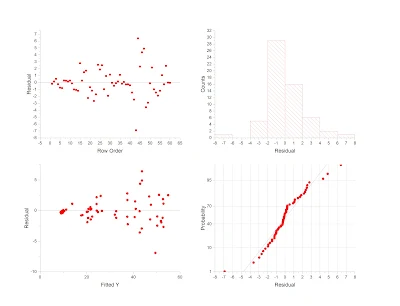Introduction to Linear Mixed Effects Models (LMM)
Linear Mixed Effects Models (LMM) have become indispensable tools in data analysis, particularly when dealing with complex, hierarchical, or repeated measures data. These models extend traditional linear models by incorporating both fixed and random effects, allowing for greater flexibility and accuracy when analyzing data with grouped structures. LMMs are commonly used in fields such as biostatistics, ecology, psychology, and social sciences.
In this comprehensive guide, we will explore the fundamentals of LMM, the advantages of using them, practical examples of implementation in OriginPro, and key insights into interpreting the results.
 |
| Linear Mixed Effects Model (LMM) in OriginPro |
Download the LMM App for OriginPro
Enhance your statistical analysis in OriginPro with the free Linear Mixed Effects Model (LMM) App. Download it directly from the Origin Lab website: 👉 Download LMM App for OriginPro
Understanding the Components of LMM
Fixed Effects
Fixed effects represent consistent and predictable influences on the dependent variable. These effects are assumed to be constant across all observations. For example, in a plant growth study, fertilizer type may be treated as a fixed effect because its influence on growth is consistent across all plots.
Random Effects
Random effects account for variability across groups or subjects that are not explicitly modeled. These effects introduce random variations that help explain differences in observations due to unmeasured factors. In the plant growth example, differences in growth between individual plots can be modeled as random effects.
Residuals
Residuals are the unexplained differences between the observed and predicted values. In LMM, residuals capture the random noise that remains after accounting for both fixed and random effects.
Intercept
The intercept in an LMM represents the expected value of the response variable when all predictors are set to zero. It serves as a baseline for interpreting other model coefficients.
Why Choose Linear Mixed Effects Models?
Addressing Non-Independence in Data
LMMs are particularly useful when observations are not independent, a common scenario in repeated measures or nested designs. For instance:
- In clinical trials, patient measurements taken over time are likely correlated.
- In ecological studies, measurements taken from the same plot or location introduce dependencies.
- In educational research, student test scores are often nested within classrooms or schools.
Advantages of LMM
- Flexibility: LMMs can handle unbalanced datasets with missing values more effectively than traditional linear models.
- Hierarchical Data: LMMs naturally model data with nested or hierarchical structures.
- Reduced Risk of Type I Error: By incorporating random effects, LMMs reduce the likelihood of falsely detecting significant effects.
- Improved Model Fit: LMMs account for both within-group and between-group variability, leading to more accurate predictions.